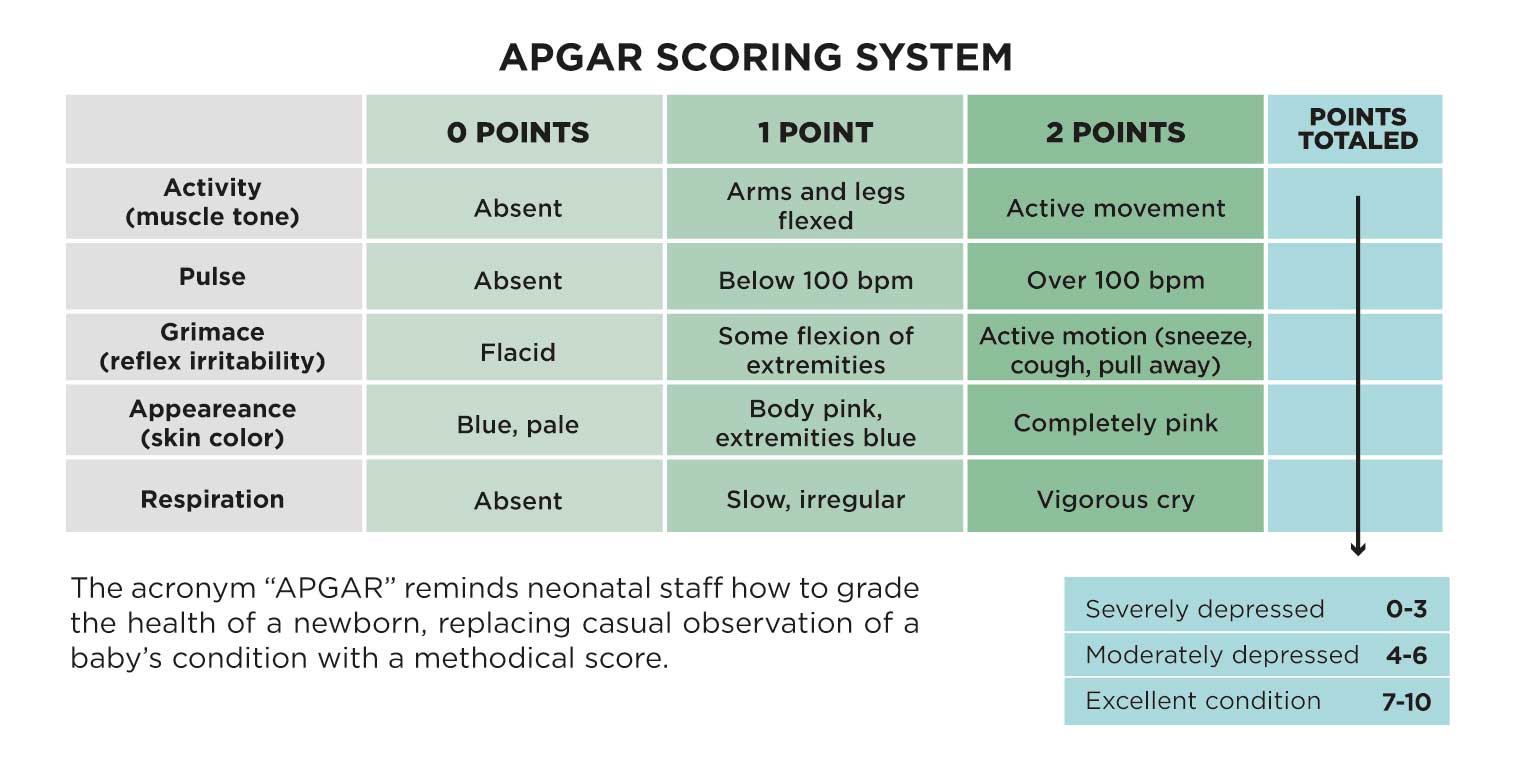
For example, babies bornĬ-section are more likely to have low scores than infants with normal births.

Most newborn infants have Apgar scores greater than 7. For example, let's say your baby has a heart rate of more than 100,Ĭoughs in response to the syringe, but is blue her one minute Apgar score would be 8-two points off because she is blue and not pink. How is the Apgar Test Scored?Įach characteristic is given an individual score two points for each of the five categories if all is completely well then all scores are totaled. But it does alert the hospital staff if she is sleepier or slower to respond than normal and may need assistance as she adapts to her new world outside the womb. It cannot predict how healthy she will be as she grows up or how she will develop nor does it indicate how bright she is or what her personality is like. (named after its creator, Virginia Apgar) helps the physician estimate your baby's general condition at birth. When each of these time periods is up, a nurse or physician will give your baby her first "tests," called There are further tests and examinations that take place in the subsequent weeks and months after birth that will be used to assessing your infants health.Born, a delivery nurse will set one timer for one minute and another for five minutes. Keep in mind that the Apgar score is just one of many ways to measure a newborn's vitality. Also, if your baby has a low first score but then a normal second score, this is counted as normal. A low score at five minutes does not necessarily indicate poor health. The Apgar scoring system was not created to predict or warn of long-term health or developmental issues. Pediatric support will be also be given and the test will be routinely repeated until the infant is in a stable condition. Your midwife may rub his chest or extremities to assist.īabies with a lower score may require additional heat, light and oxygen via medical equipment.

In most cases, if your baby scores between 8 and ten, he’s in excellent condition and will not require anything more than routine care.Ī baby scoring between 5 and 7 is usually in fair condition but may need a little bit of help with breathing. The use of pain relief can also affect scores. However, certain conditions such as a difficult or premature birth can give an artificially low score that doesn’t accurately reflect the health of your baby. The vast majority of newborns tend to score between seven and 10 and do not require additional treatment. Muscle tone: Limp or floppy scores 0, some movement and flexing scores 1, Active motion of the limbs scores 2īreathing: Not breathing scores 0, Slow or irregular breathing scores 1, Breathing well, and crying scores 2 Deciphering Apgar scores
#Apgar score plus
Reflex response: No response scores 0, Grimacing in response to stimuli scores 1, Grimacing plus crying or coughing scores 2. Heart rate: No heart beat scores 0, Slow heart rate (less than 100 beats per minute) scores 1, Adequate heart rate (more than 100 beats per minute) scores 2.
#Apgar score skin
Skin colour: Blue all over scores 0, Pink body, white extremities scores 1, Pink all over scores 2.

Your midwife will also check your baby’s height and weight, mouth, temperature and number of fingers and toes. If your midwife has any cause for concern she will arrange for immediate treatment.

The midwife checks over the baby’s skin colour, heart rate, reflex response, muscle tone and breathing.Įach of the five criteria is given a score between zero and two, to give a total of up to 10.Īlthough most babies will have no issues, these early tests are a vital part of postnatal care. The test takes place so soon after the birth that you may not even be aware of it being performed. The Apgar scale gets its name from the medic who founded it, though it has since become an acronym for each of the criteria under scrutiny: The results range form zero to ten and are determined by evaluating five criteria. The test will take place twice after birth, immediately after and five minutes later.The score ranges from 0-10, broken up into 5 groups of 0-2.The Apgar score is a simple way for doctors or midwives to asses the health of your newborn.


 0 kommentar(er)
0 kommentar(er)
